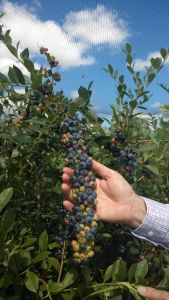Consumer Liking Prediction to Boost Repurchase of Berries
The consumer liking prediction models developed by Delytics are helping berry growers take steps to increase the repurchase rate of their berries by predicting consumer response before harvest.
 The models enable berry growers to set their harvest criteria as closely as possible to the ascetics and taste that consumers are looking for in any given market, and to identify the best time to harvest to achieve their desired consumer response. Useable results are typically produced within one season.
The models enable berry growers to set their harvest criteria as closely as possible to the ascetics and taste that consumers are looking for in any given market, and to identify the best time to harvest to achieve their desired consumer response. Useable results are typically produced within one season.
Delytics custom-designs each consumer liking prediction model to suit the requirements of specific berry growers, varieties and markets.
Delytics Managing Director, Mark Loeffen says, “The model helps growers determine the best time to harvest berries to encourage consumers to make the first purchase, and then keep coming back for more. Research shows that that a consistently good eating experience has a direct correlation to higher repurchase rates and retail prices.”
Delytics works with growers from around six weeks prior to harvest to monitor berry maturity indicators. That information is then fed into the Delytics online Crop Quality Advisor platform to help set harvest criteria and generate easily interpreted graphs that help growers make more accurate harvest decisions
Mark Loeffen says, “Everything we do is focused on achieving a consistently good eating quality that will help optimise repeat purchases. Monitoring we have carried out on blueberries has shown that what is considered to be a good `mature’ skin colour does not always result in a good eating experience. This has highlighted the importance of monitoring the internal maturity of berries to ensure growers get the best outcome. A good colour will encourage consumers to purchase berries the first time, but they will be unlikely to repurchase if the taste doesn’t meet their expectations. Our goal is to help consumers have a great taste experience every time, which will encourage them to buy more.”
The models are especially useful for companies that grow berries over multiple farms and locations because it allows the growing criteria, and therefore eating quality, to be standardised.

